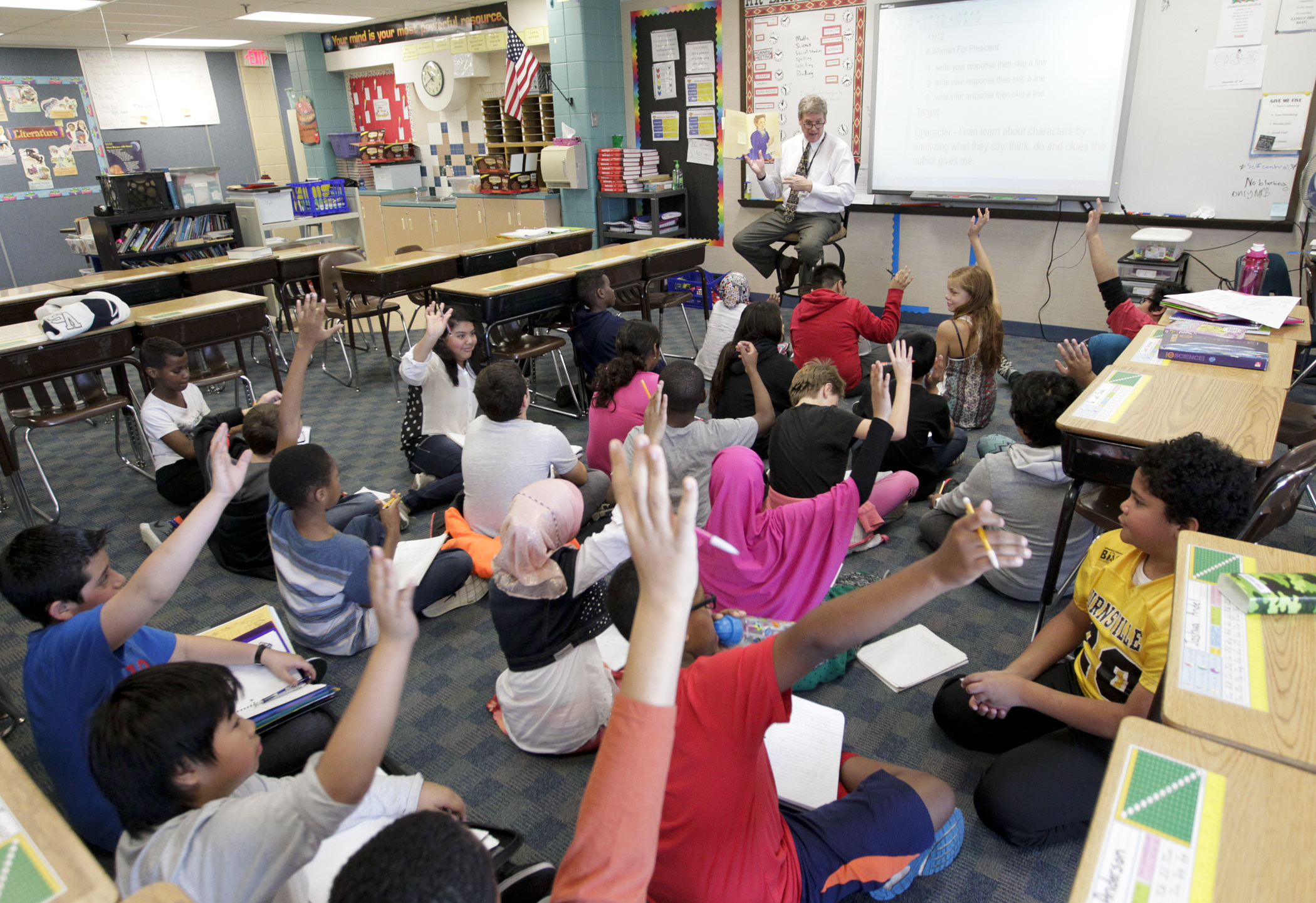House bill would mandate smaller K-12 class sizes, boost funding formula

Class sizes in Minnesota schools are spiraling out of control, parents and educators say. Classrooms of 30 or 35 students are becoming increasingly common, impairing educational outcomes and causing teacher burnout.
Rep. Zack Stephenson (DFL-Coon Rapids) sees this as a dire situation that requires drastic measures.
“Class size matters. Too many students in a classroom makes individualized attention virtually impossible,” he said. “Small class sizes have long-term benefits for students, particularly in the early years of education.”
He sponsors HF2619, which would mandate class size ratios in K-12 schools and provide dedicated funding to achieve this end.
On Friday, the House Education Finance Committee laid over the proposal, as amended, for possible inclusion in an omnibus bill.
Stephenson’s bill would require districts to hire many more teachers and paraprofessionals in order to reduce class sizes. The state would cover these costs by increasing the general education basic formula starting in fiscal year 2024. The formula allowance for school districts would jump from $6,863 per adjusted pupil unit to $8,236, a 20% increase. For future years, basic formula increases would be tied to inflation, as measured by the Consumer Price Index for urban consumers.
Districts would be required to reduce class sizes via plans negotiated with the teacher unions. Agreed upon class size ratios would have to be no greater than:
- 17 students to one educator for kindergarten through grade 3;
- 21 to one for grades 4 through 9; and
- 23 to one for grades 10 through 12.
The proposal contrasts with HF439. That bill, heard by the committee last month, would raise the basic formula 5% annually in the next two fiscal years but makes no mention of class size. Future increases would also be indexed to inflation, starting in fiscal year 2026.
Several teachers testified in support of Stephenson’s bill, highlighting both the teaching and learning difficulties associated with overcrowded classrooms.
“The most important resources in Minnesota classrooms are time and trusting relationships between students and educators,” said Greta Callahan, a kindergarten teacher and president of the Minneapolis Federation of Teachers. “When class sizes get smaller or student-to-educator ratios improve, good things happen.”
Rep. Ron Kresha (R-Little Falls) opposes the bill. He argued it will constrain school budgets to meet the class size mandate, strip districts and educators of the ability to determine what’s best for them on the local level, and cost the state $3 billion to $4 billion.
His comments prompted a rebuttal from Rep. Sydney Jordan (DFL-Mpls), who noted that state law currently precludes the negotiation of class size ratios during collective bargaining. However, she is sponsoring HF1691, which would place class sizes under the “terms and conditions of employment” to be hammered out at the bargaining table. Whether providing a funded mandate like Stephenson suggests or simply allowing for negotiation, she insists something must be done now to reduce class sizes.
Related Articles
Search Session Daily
Advanced Search OptionsPriority Dailies
Speaker Emerita Melissa Hortman, husband killed in attack
By HPIS Staff House Speaker Emerita Melissa Hortman (DFL-Brooklyn Park) and her husband, Mark, were fatally shot in their home early Saturday morning.
Gov. Tim Walz announced the news dur...
House Speaker Emerita Melissa Hortman (DFL-Brooklyn Park) and her husband, Mark, were fatally shot in their home early Saturday morning.
Gov. Tim Walz announced the news dur...
Lawmakers deliver budget bills to governor's desk in one-day special session
By Mike Cook About that talk of needing all 21 hours left in a legislative day to complete a special session?
House members were more than up to the challenge Monday. Beginning at 10 a.m...
About that talk of needing all 21 hours left in a legislative day to complete a special session?
House members were more than up to the challenge Monday. Beginning at 10 a.m...